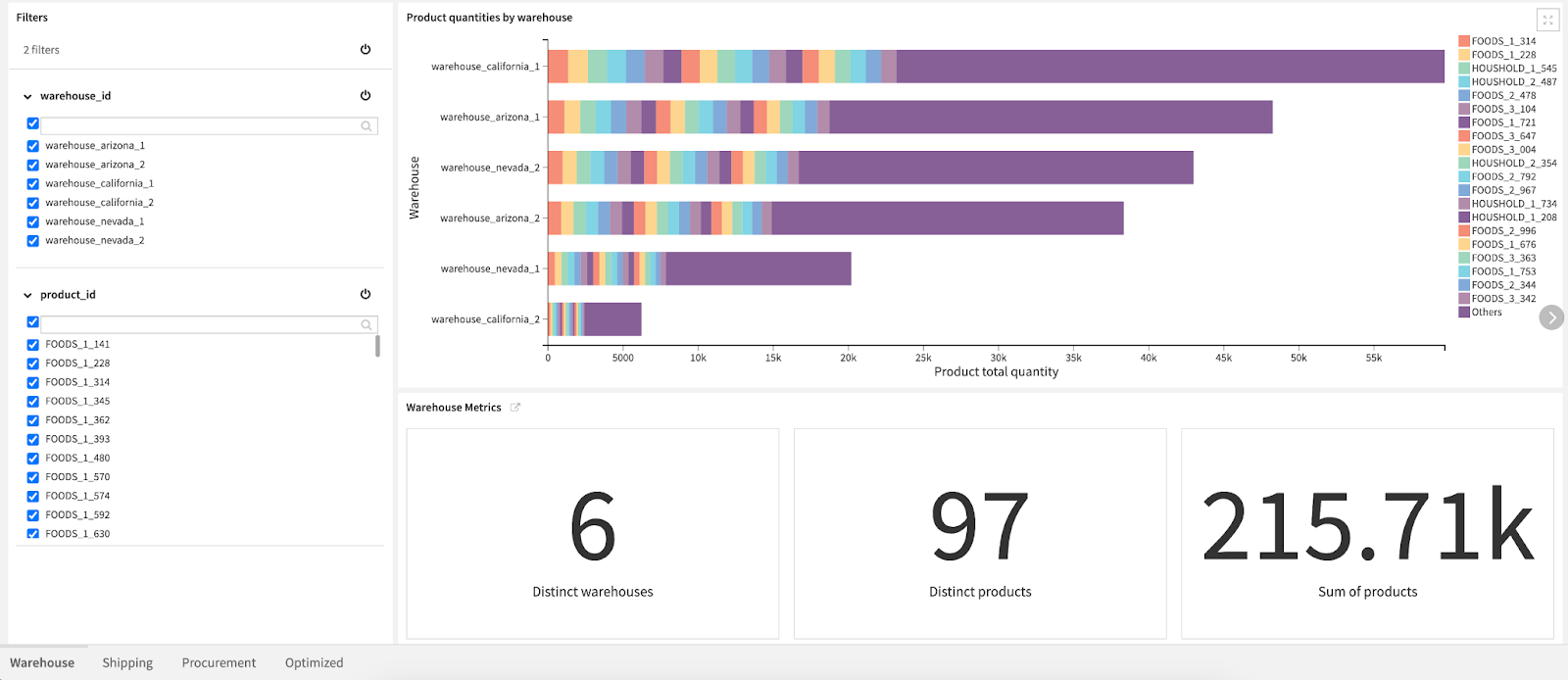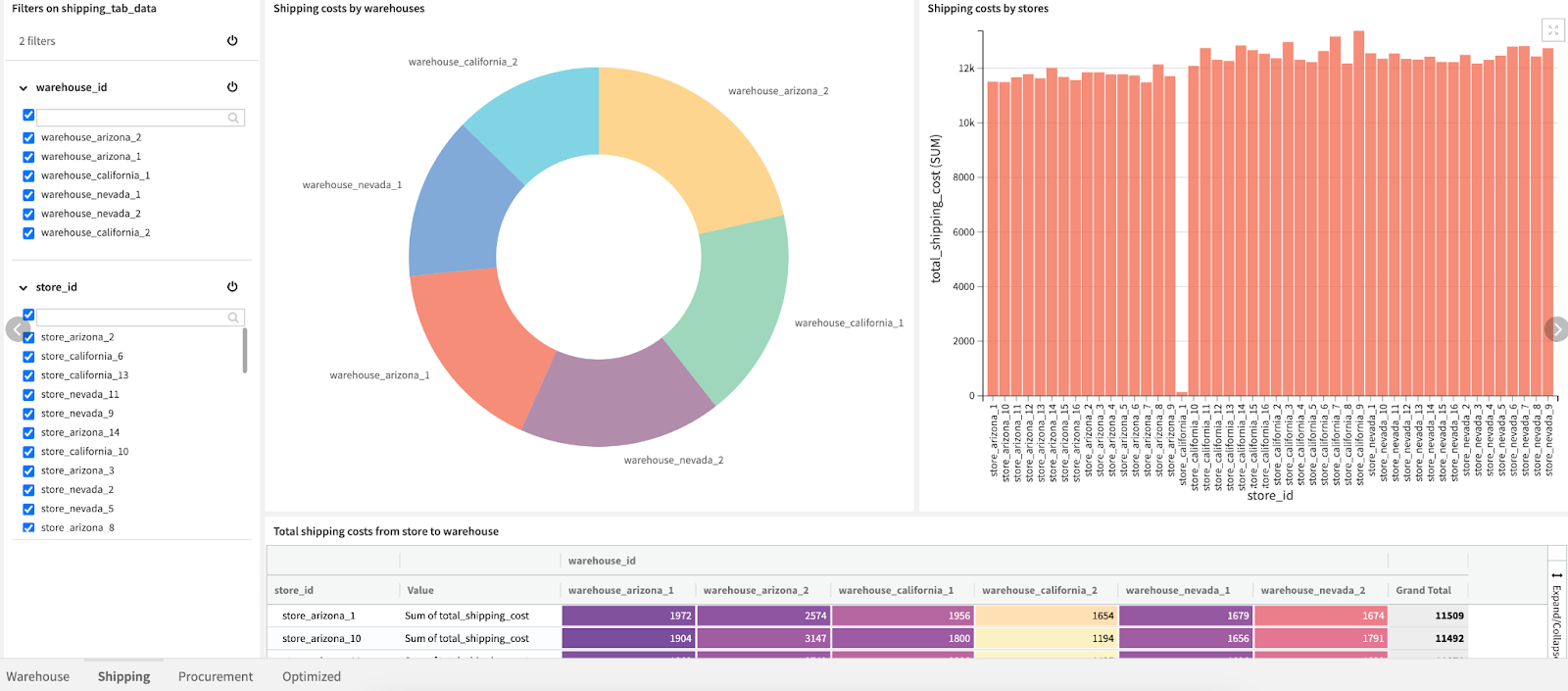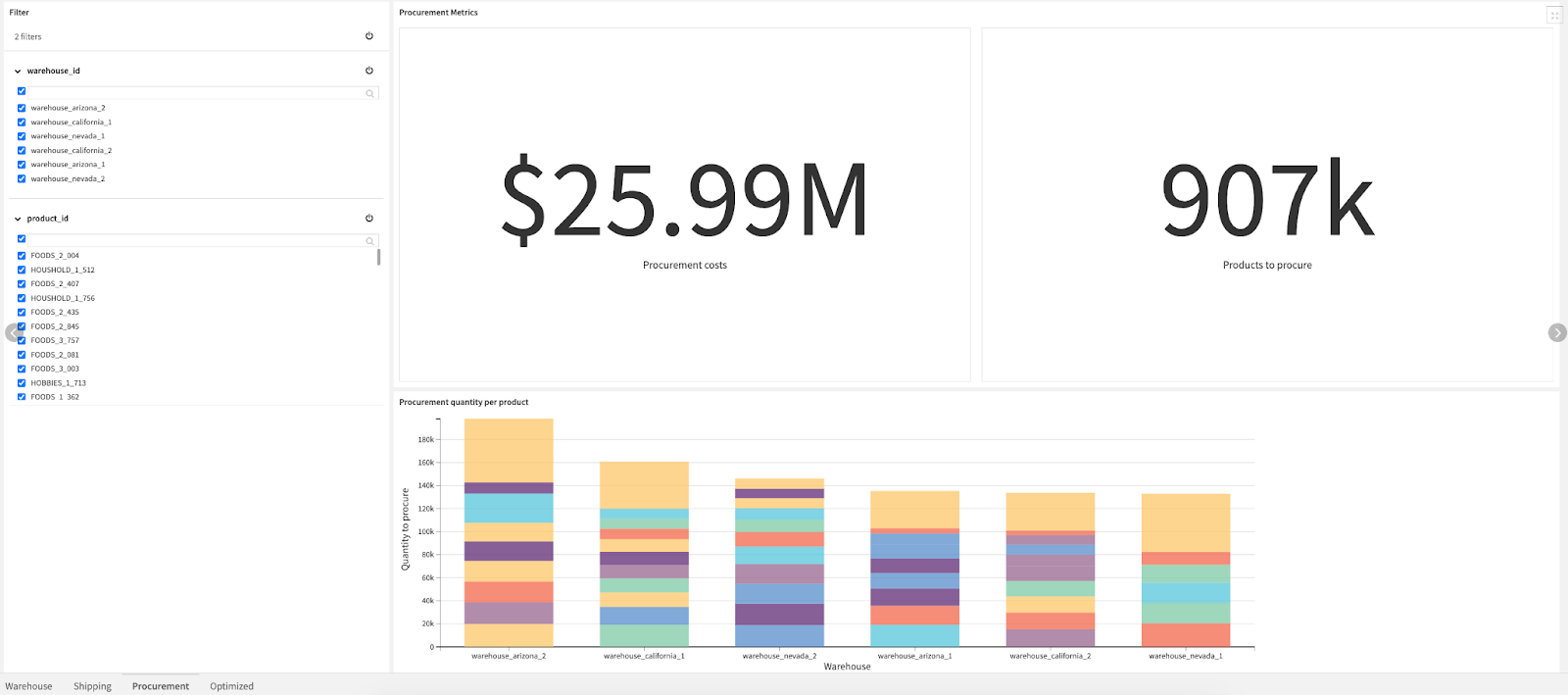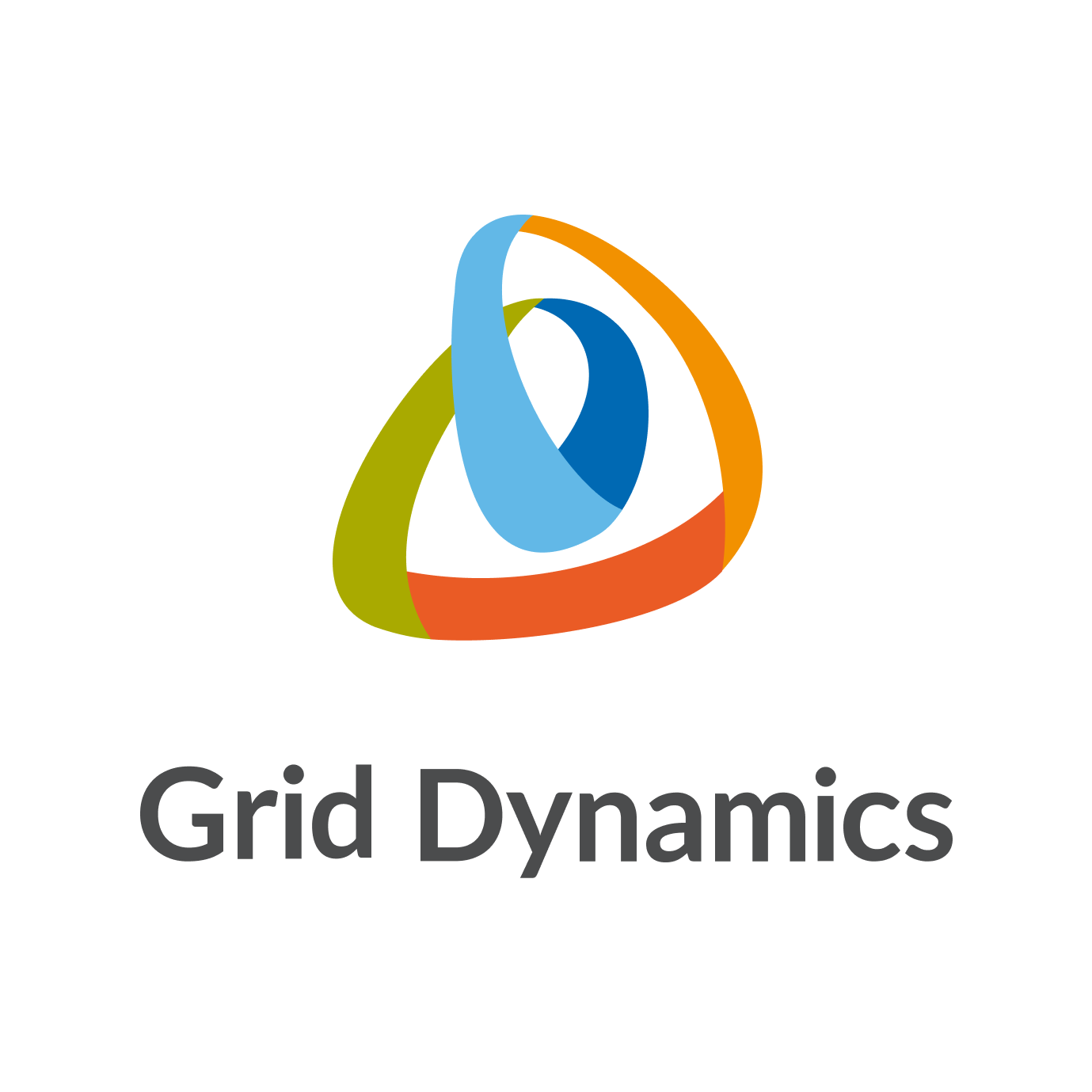
From chaos to control: The benefits of inventory allocation optimization
As businesses grow and expand in the increasingly digital on-demand economy, managing inventory has become a far more convoluted process. For example, many retail and manufacturing companies have to deal with complex environments with multiple sourcing locations, including regional warehouses, multiple destinations such as countries they deliver to, and diversified shipping cost structures. These companies need to ensure that they have enough products in stock to meet customer demand in different locations, while avoiding the costs of excess inventory and minimizing shipping costs at the same time.
Optimizing the inventory allocation process is one way that businesses can streamline multi-echelon inventory management, save time and resources, and satisfy their customers with dependable inventory availability. And while basic reordering policies can be sufficient for single-location stores or warehouses, complex environments require finer levels of granularity and mathematical precision that only an advanced data science and analytics platform can provide.
Enter the Inventory Allocation Optimization Starter Kit, a pre-built solution that works with the Dataiku data science platform.
To make it easy for businesses to get started with Inventory Allocation Optimization, the starter kit includes pre-built workflows and data models that can be customized to meet specific business needs. The starter kit also includes documentation and training materials to help users get up to speed quickly.
In this blog, we’ll provide an overview of the main inventory management challenges that most industries face, and how our Inventory Allocation Optimization solution works to solve them.
Key inventory management challenges
Inventory optimization is a complex process that involves managing several elements at once. Understanding how each of these elements work together is critical to making informed decisions about inventory levels:

Estimating expected inventory demand
The most important aspect of the inventory optimization process is having insight into expected demand. Therefore, accurate demand forecasting, which is the process of estimating the future demand for a certain group and time window, is essential, as it enables businesses to determine how much inventory they need to hold to meet customer demand.
Minimizing inventory procurement and carrying costs
The second most important element of inventory optimization is managing costs. There are two main cost sources in inventory management: procurement costs and carrying costs. Procurement cost refers to the expenses associated with purchasing goods or services from suppliers, and carrying cost refers to the costs associated with transporting and holding inventory, such as storage costs and the cost of having tied up capital.
Managing safety stock levels and supplier lead times
Two additional factors, safety stock and lead time, are also crucial in the planning process of inventory replenishment. Safety stock refers to the extra inventory that is held to prevent stockouts. It is a cushion that helps ensure that a business always has enough inventory to meet customer demand, even if demand is higher than expected. The lead time is the time it takes for an order to arrive from the supplier. It is important to consider lead time because long lead times may require a business to hold more safety stock to ensure that it always has enough inventory to meet customer demand.
Avoiding order splits
The final critical factor to creating an efficient inventory management plan is to avoid order splits. Order splits occur when a single customer order is divided into multiple smaller orders to be fulfilled by different sources or shipped to different locations. Order splits introduce an additional source of complexity, inefficiency, and higher shipping costs.
As you can see, these factors interact with one another in complex ways, and a change in one factor can have a significant impact on the others. By balancing the cost of holding inventory with the cost of stockouts, businesses can achieve optimal inventory levels, leading to reduced costs, improved customer satisfaction, and increased efficiency.
Real-case inventory optimization scenarios
In this section, we present a few cases that demonstrate how inventory allocation optimization is implemented in real-world scenarios.
Retail omnichannel distribution
The first example is represented by a retail business that wants to optimize the distribution of its products among multiple stores. The company might use data analysis to determine which products are most in demand at each store, and allocate inventory accordingly. For instance, if a certain store is located in a beach resort area and has a high demand for swimwear, the company would allocate a larger inventory of swimwear to that store compared to stores located in areas with lower demand for that product.
Automotive vehicle distribution
Another example of inventory allocation optimization is represented by a transportation company that wants to optimize the distribution of its vehicles across different regions. The company might use data to determine the demand for its vehicles in each region and allocate vehicles accordingly. For example, if a certain region has a higher demand for larger vehicles, the company would allocate more of its larger vehicles to that region, while allocating smaller vehicles to regions with lower demand.
Grocery retail distribution
Grocery retailers need to optimize their product assortment to ensure that they are stocking the right mix of products at each store location, as well as managing inventory allocation during seasonal demand fluctuations, such as holiday periods, to ensure that they have enough inventory to meet customer demand without overstocking. Logistics and cold storage for grocery retail also need to be tightly controlled to avoid food spoilage and excess costs.
Fashion retail distribution
The last example relates to the fashion industry, where trend analysis and forecasting, assortment planning, and seasonal demand management are crucial. The fashion industry is characterized by seasonal demand fluctuations, such as winter coats and summer dresses, so retailers need to manage inventory allocation during these periods to ensure that they have enough inventory to meet customer demand without overstocking. Fashion retailers also need to carefully plan their product assortments, taking into account factors such as customer demographics, regional preferences, and past sales data. This can help retailers optimize inventory allocation by stocking the right mix of products at each location.
These are a few typical cases, and although the problem of inventory allocation is common to many different industries, there are also other factors that must be considered for each industry separately. While we provide a solution for a typical case in this blog post, the Inventory Allocation Optimization Starter Kit can be customized for particular use cases in different industries.
How the Inventory Allocation Optimization solution works
The solution uses algorithms to analyze datasets such as sales history, inventory levels at different locations, product sets, shipping costs, and customer demand to predict future demand and optimize inventory allocation. By using this solution, businesses can improve supply chain operational efficiency, increase customer satisfaction, and reduce shipping costs and order splits.
Generation of these datasets follows a logical order that maps relationships between data sources:
- Firstly, location of supply and demand nodes is generated by randomly selecting their physical location coordinates.
- In parallel, a list of product SKUs, their procurement costs, and the product sets to which they belong (product sets represent a basket/list of products that are regularly bought together, i.e. tomato sauce and pasta) is created.
- In the following phase, product demand for each location is generated. In the setup, certain constraints penalize split orders from different warehouses in order to avoid unnecessary shipping costs.
- Next, from the list of warehouses, current capacity, and on-hand quantity of SKUs is generated.
- Finally, the transportation cost of units between different warehouses and stores is generated. For this, an approximation of driving distance between stores and warehouses is used. Therefore, shipping cost is the product between approximated distance and cost of unit per kilometer, which is constant.
- At the end, the Dataiku solution implements an additional set of optional data sources for benchmarking procurement and product quantities from different locations.
Below are a few dashboard view examples used to optimize inventory allocation across multiple locations, and procurement and shipping costs:



For a more in-depth, technical explanation with implementation and architecture details, please read: Inventory allocation optimization: A pre-built solution for Dataiku
Benefits of inventory allocation optimization
Real-world examples have shown the benefits of Inventory Allocation Optimization. In the retail industry, a retailer was able to reduce out-of-stock items by 50%, resulting in a 5% increase in revenue. In the consumer goods industry, a manufacturer was able to reduce excess inventory by 15%, resulting in a significant decrease in inventory storage and management costs.
Inventory Allocation Optimization is a valuable tool for making more informed inventory level decisions to meet customer demands and cut costs by carefully considering a variety of factors, including demand forecasting, procurement, order splitting, and shipping costs with a single solution: The Inventory Allocation Optimization Starter Kit.
Get in touch with us to start a conversation on how to optimize your supply chain and inventory management with our custom industry blueprints and starter kits.
